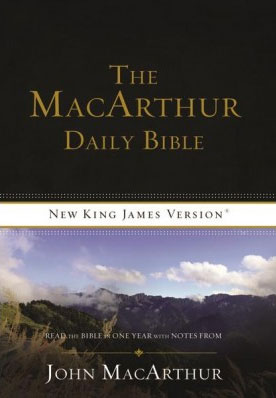Devotionals
Daily Bible - December 14
A devotional by Grace To You for reading on December 14th
Reading for Today:
- Amos 4:1 –5:27
- Psalms 141:5-10
- Proverbs 29:26
- Revelation 4:1-11
Notes:
Amos 5:25, 26 In addition to worshiping the Lord in the wilderness, Israel also worshiped other gods, carrying along “Sikkuth [or “tabernacle”] your king [or “Molech”] and Chiun, your idols.” Molech worship included the astrological worship of Saturn and the host of heaven and the actual sacrificing of children (2 Kin. 17:16, 17). Warned against Molech worship (Deut. 18:9–13), Israel nevertheless pursued all facets of it, continuing with Solomon (1 Kin. 11:7) and his descendants (1 Kin. 12:28; 2 Kin. 17:16, 17; Jer. 32:35) until Josiah (2 Kin. 23:10). Stephen recited Amos 5:25 –27 when he recounted the sins of Israel in Acts 7:42 , 43.
Revelation 4:4 twenty-four elders. Their joint rule with Christ, their white garments (19:7, 8), and their golden crowns (2:10) all seem to indicate that these 24 represent the redeemed (vv. 9–11; 5:5–14; 7:11–17; 11:16–18; 14:3; 19:4). The question is, Which redeemed? Not Israel, since the nation is not yet saved, glorified, and coronated. That is still to come at this point in the events of the end. Their resurrection and glory will come at the end of the 7-year tribulation time (Dan. 12:1–3).Tribulation saints aren’t yet saved (7:9, 10). Only one group will be complete and glorified at that point—the church. Here elders represent the church, which sings the song of redemption (5:8–10). They are the overcomers who have their crowns and live in the place prepared for them, where they have gone with Jesus ( John 14:1 –4).
DAY 14: Are there different approaches to interpreting the Book of Revelation?
No other New Testament book poses more serious and difficult interpretive challenges than Revelation. The book’s vivid imagery and striking symbolism have produced 4 main interpretive approaches:
The preterist approach interprets Revelation as a description of first-century events in the Roman Empire. This view conflicts with the book’s own often repeated claim to be prophecy (1:3; 22:7, 10, 18, 19). It is impossible to see all the events in Revelation as already fulfilled. The Second Coming of Christ, for example, obviously did not take place in the first century.
The historicist approach views Revelation as a panoramic view of church history from apostolic times to the present—seeing in the symbolism such events as the barbarian invasions of Rome, the rise of the Roman Catholic Church, the emergence of Islam, and the French Revolution. This interpretive method robs Revelation of any meaning for those to whom it was written. It also ignores the time limitations the book itself places on the unfolding events (11:2; 12:6, 14; 13:5). Historicism has produced many different—and often conflicting—interpretations of the actual historical events contained in Revelation.
The idealist approach interprets Revelation as a timeless depiction of the cosmic struggle between the forces of good and evil. In this view, the book contains neither historical allusions nor predictive prophecy. This view also ignores Revelation’s prophetic character and, if carried to its logical conclusion, severs the book from any connection with actual historical events. Revelation then becomes merely a collection of stories designed to teach spiritual truth.
The futurist approach insists that the events of chapters 6–22 are yet future and that those chapters literally and symbolically depict actual people and events yet to appear on the world scene. It describes the events surrounding the Second Coming of Jesus Christ (chaps. 6–19), the Millennium and final judgment (chap. 20), and the eternal state (chaps. 21; 22). Only this view does justice to Revelation’s claim to be prophecy and interprets the book by the same grammatical-historical method as chapters 1–3 and the rest of Scripture.
From The MacArthur Daily Bible Copyright © 2003. Used by permission of Thomas Nelson Bibles, a division of Thomas Nelson, Inc, Nashville, TN 37214, www.thomasnelson.com.
Additional Resources- Download our app The Study Bible!
- John MacArthur’s complete sermon archive
- The MacArthur Study Bible
- The complete MacArthur New Testament Commentary series
The content above belongs exclusively to Grace To You - Daily Bible and is provided on HopeLife.org for purely non-profit purposes to help extend the reach of their ministry.
Copyright 2016 by John MacArthur. Used by permission from Grace to You.



